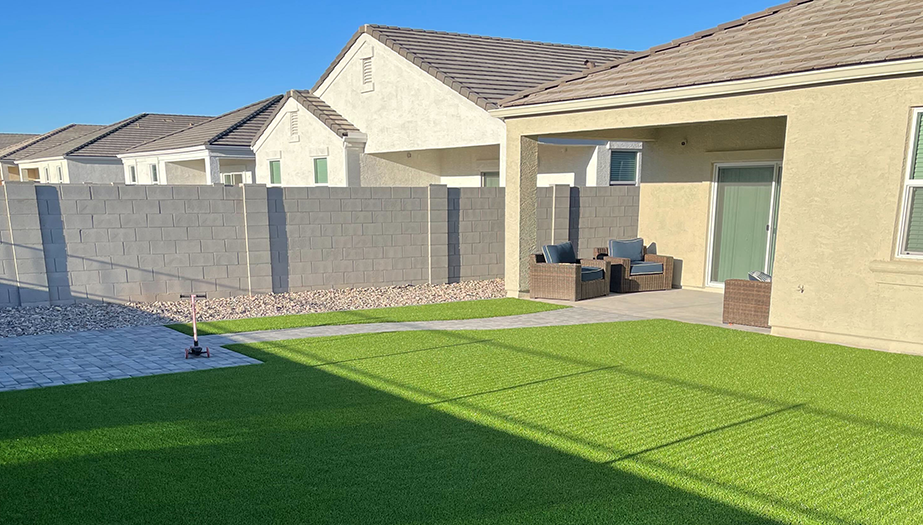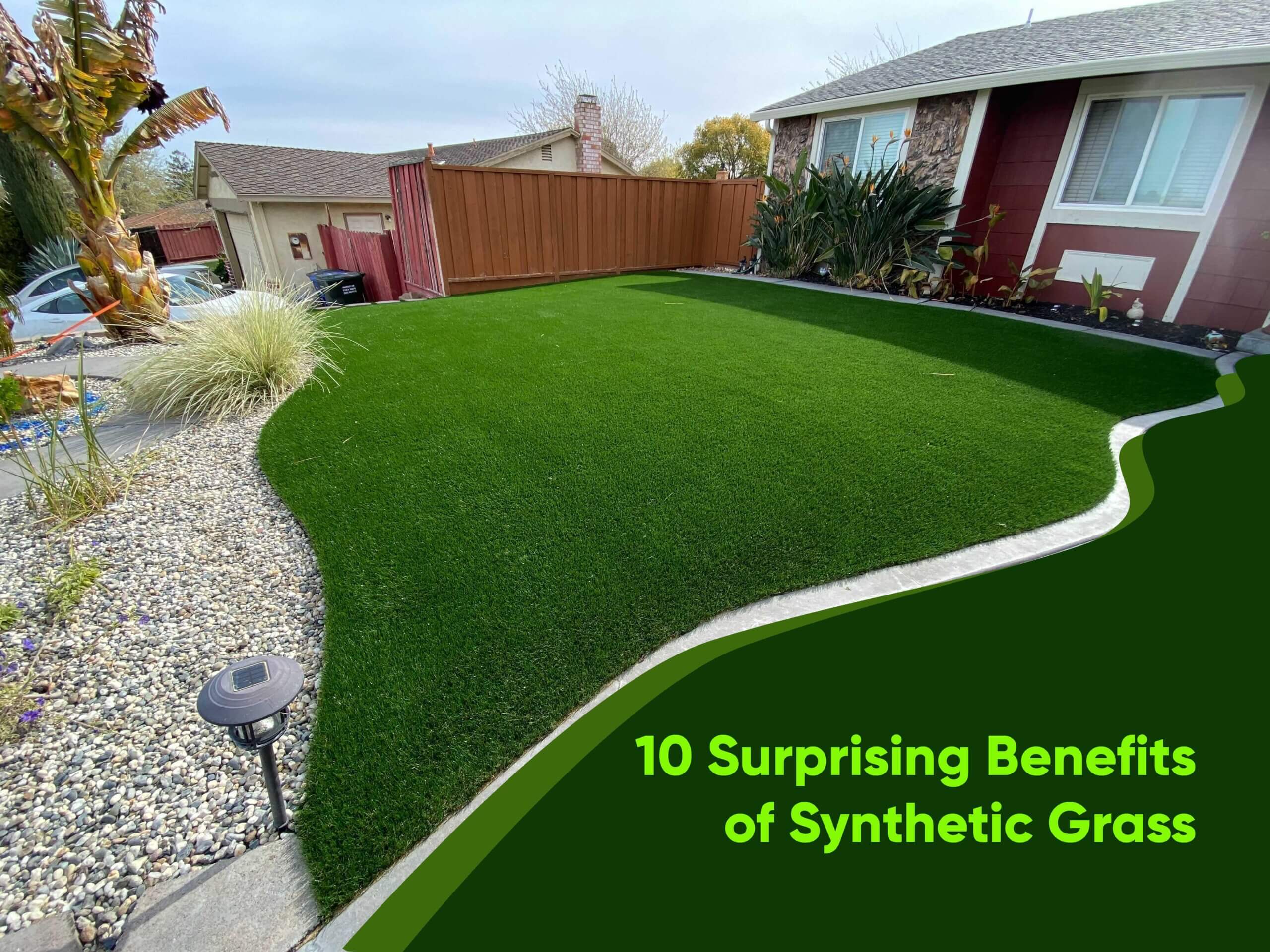Explore the Best Artificial Grass for Your Canoga Park Property
Wiki Article
Top Reasons to Think About Artificial Turf for a Lush and Low-Maintenance Yard
As home owners progressively seek sustainable services for exterior spaces, man-made lawn provides an attractive option to standard yards. The advantages extend beyond plain aesthetics and sustainability; exploring the multifaceted effects of fabricated yard discloses a detailed technique to yard management that benefits much deeper factor to consider.Year-Round Plant
One of one of the most considerable advantages of fabricated turf is its ability to supply year-round greenery, no matter of climate problems. House owners frequently encounter difficulties in maintaining a vivid lawn as a result of seasonal modifications, dry spells, or heavy rains. Man-made grass gets rid of these concerns, ensuring a constantly lush look throughout the year.
This artificial option is crafted to endure diverse weather situations, from scorching summertime warmth to freezing wintertime temperature levels. Unlike natural turf, which might brownish or become irregular throughout severe conditions, synthetic grass maintains its lively shade and texture, improving the visual allure of any landscape.
Additionally, man-made yard is resistant to insects and illness that generally impact all-natural grass. This resilience adds to its enduring appeal, as there is no demand for chemical therapies or plant foods that can be hazardous to the atmosphere. Moreover, home owners can appreciate the visual benefits of a well-maintained lawn without the cyclical challenges positioned by natural turf treatment (turf installation).
Minimized Maintenance Efforts
Synthetic turf considerably decreases maintenance efforts, permitting home owners to appreciate an immaculate grass without the taxing tasks connected with natural grass care. Among one of the most significant benefits of synthetic turf is the elimination of normal mowing. Without demand for a lawnmower, house owners save both time and the cost of upkeep related to this devices.

Cleaning synthetic turf is straightforward; an easy rinse with a hose pipe or the occasional brushing to remove debris is generally sufficient - turf installation. This convenience of treatment enables house owners to spend more time appreciating their exterior areas as opposed to laboring over them. In summary, the lowered upkeep initiatives connected with synthetic yard make it an enticing selection for those looking for a lovely, problem-free lawn
Water Conservation Benefits
The substantial decrease in maintenance initiatives related to synthetic grass expands to water preservation, making it an eco-friendly alternative for property owners. Traditional grass need substantial quantities of water to stay vivid and lush, often bring about extreme water use, especially in deserts. On the other hand, man-made grass removes the requirement for routine watering, considerably lowering the general water consumption in your lawn.By choosing synthetic lawn, property owners can preserve countless gallons of water yearly. This shift not just benefits individual homes but also adds to broader environmental initiatives targeted at lowering water waste. In areas experiencing water shortage, the fostering of artificial lawn can play a significant function in alleviating the effects of drought and making sure that valuable water resources are used extra efficiently.
Moreover, the installment of fabricated turf can assist reduced metropolitan water need, benefiting the community all at once. With expanding recognition of ecological issues, choosing synthetic lawn acts as an aggressive action in the direction of lasting landscape design, helping to preserve natural water sources while preserving a visually pleasing outside area (backyard artificial grass). In recap, artificial grass presents an engaging solution for water preservation, straightening ecological duty with modern-day landscape design needs

Parasite and Allergy Decrease
A significant benefit of installing synthetic lawn is its capacity to decrease bugs and irritants in exterior spaces. Conventional grass yards typically function as breeding premises for insects such as mosquitoes, ticks, and ants, which can develop discomfort and wellness risks for households and pet dogs. In contrast, man-made yard eliminates the organic product that brings in these insects, consequently significantly reducing their populaces in your backyard.Furthermore, natural lawn can nurture mold, pollen, and other allergens, which can cause allergic reactions and respiratory problems for delicate people. Artificial turf offers a cleaner atmosphere, minimizing the possibility for allergenic responses. click for info Unlike natural lawn, fabricated turf does not produce pollen, making it an exceptional choice for allergic reaction victims looking for to appreciate their exterior spaces without the risk of flare-ups.
Additionally, the absence of soil in synthetic turf implies there is less dust and dirt, further reducing airborne allergens. This low-maintenance alternative not only boosts the visual allure of your backyard but also promotes a much healthier exterior environment, allowing families to enjoy their lawns without the constant worry of bugs and allergens. Hence, man-made lawn is a calculated option for those prioritizing convenience and wellness in their outside living areas.
Long-Term Expense Savings
Buying synthetic turf can bring about considerable long-lasting cost savings for homeowners. While the first financial investment may seem substantial, the monetary benefits with time can be substantial. Man-made turf eliminates the demand for routine lawn upkeep expenses, such as mowing, feeding, and watering. Standard lawns often call for substantial sources to preserve a lavish appearance, specifically in locations prone to dry spell or extreme weather.In addition, the longevity of artificial turf even more boosts its cost-effectiveness. Many high-grade synthetic yard products can last 15 to 25 years with very little maintenance, decreasing the demand for replacement or substantial repairs. In contrast, all-natural turf might call for frequent reseeding and routine treatment, which can quickly add up in expenses.
Energy savings are another vital variable. Property owners can anticipate to see lower water costs, as artificial lawn does not require irrigation. Additionally, the reduction in yard treatment solutions can liberate valuable time and resources, allowing property owners to designate their spending plans in other places.
Conclusion
In summary, synthetic grass offers many advantages for anonymous property owners looking for a vibrant and low-maintenance landscape. Inevitably, the long-lasting cost financial savings connected with artificial lawn solidify its status as a lasting and useful service for boosting exterior areas.Artificial yard substantially reduces upkeep efforts, permitting property owners to delight in a beautiful Source grass without the time-consuming jobs associated with all-natural grass treatment.The significant decrease in upkeep efforts linked with synthetic yard prolongs to water preservation, making it an environmentally pleasant option for home owners. In contrast, man-made yard eliminates the requirement for normal watering, dramatically reducing the total water consumption in your lawn.
In locations experiencing water scarcity, the adoption of man-made yard can play a considerable role in reducing the results of dry spell and ensuring that valuable water resources are utilized extra efficiently.
With growing understanding of environmental problems, selecting fabricated grass serves as a positive action in the direction of lasting landscaping, helping to protect natural water resources while keeping a cosmetically pleasing outdoor space.
Report this wiki page